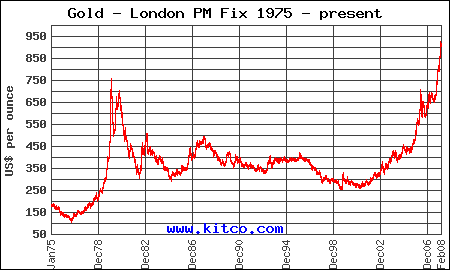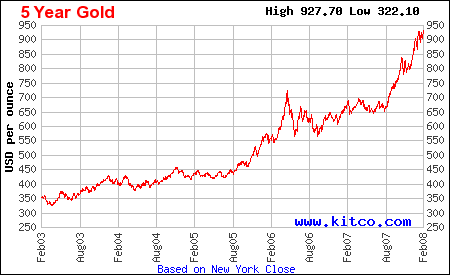Do your jewelry claim settlements
make you "look bad"?
Here's what one agent wrote to us:
"Why does the jewelry industry do appraisals for insurance at retail prices when everything is sold for a lot less? Then the insurance company insures the item for the appraised value but pays the claim on the lower replacement price. Very confusing for the clients and for me, too. It also makes the insurance company look bad. . . ."
The agent suggested we do a newsletter on the topic. Good idea!
 Jewelry claims may not involve a lot of money, from the insurer's standpoint, but how they are settled can have a huge impact. That is, how the insured feels about the settlement can affect the agent's total business with that client.
Jewelry claims may not involve a lot of money, from the insurer's standpoint, but how they are settled can have a huge impact. That is, how the insured feels about the settlement can affect the agent's total business with that client.
Insuring jewelry can be a confusing business. The causes lie in practices of the jewelry industry, expectations of buyers, market trends, world economics, profit margins, insurance principles and practices, and how they all work together—or interfere with each other. Let's untangle some of this.
Appraised Value
As the letter-writer points out, often an appraisal valuation comes out significantly higher than the jewelry's purchase price. What does this mean? Has the seller really sold the jewelry for less than its typical retail price? There are several possible answers.
When Appraised Value is Much Higher than Purchase Price |
|
Possible Reason |
Explanation & What To Do |
| The "regular retail price" (given as the appraised value) is a concoction of the jewelry seller, to make the buyer feel good about the price actually being charged. | We have covered the issue of the bogus "retail price" in other newsletters (May 2006 and September 2006, for example). We generally suggest that, when there's a huge discrepancy between appraised value and purchase price, the purchase price is closer to the true value. |
| The seller deliberately inflates the appraisal for insurance as a "favor" to the buyer. | This is an unfortunate practice by some jewelers. Again, we suggest getting a second appraisal from a Graduate Gemologist (GG), preferably a Certified Insurance Appraiser™ (CIA). |
| The appraiser is incompetent. | Alas, most jewelry retailers are not GGs, with the training and equipment necessary to appraise even the jewelry they sell. This was dramatically illustrated in a TV investigation where NY jewelers mistook moissanite for quality diamond. Get a reliable appraisal on the insurance industry's standard JISO forms. |
| The seller has not kept up on metal and gem prices, and has sold a piece for less than he would need to profitably replace it. | The market can be tricky. A number of jewelers have gone out of business because they neglected to take into account swiftly increasing prices. This issue can also affect insurers, as we discuss in the next section. |
Replacement Price, ACV, and Bubbles
 The agent wonders why insurance companies insure jewelry at the appraised value but base the claim payout "on the lower replacement price." Tread cautiously — the replacement price is not always lower.
The agent wonders why insurance companies insure jewelry at the appraised value but base the claim payout "on the lower replacement price." Tread cautiously — the replacement price is not always lower.
Jewelry insurance settlements are based on the actual cash value (ACV) — that is, replacement cost at time of loss (less depreciation). The cost of manufacturing varies more or less with inflation, but the price of precious metals and gems can fluctuate dramatically.
For example, the price of gold almost tripled in price during the past five years.
Of course, prices can go down as well as up, as this longer-range graph shows.

Prices of silver, platinum and high-quality diamond also fluctuate. These changes would be reflected in the replacement cost.
 Pricing can be affected by a variety of factors, including politics, major weather events, and the value of the U.S. dollar in the world market. Spikes and dips occur. If a client buys jewelry when gold is expensive, the bubble may burst next year and the jewelry will be worth less. Who can predict what prices will be when a jewelry loss occurs?
Pricing can be affected by a variety of factors, including politics, major weather events, and the value of the U.S. dollar in the world market. Spikes and dips occur. If a client buys jewelry when gold is expensive, the bubble may burst next year and the jewelry will be worth less. Who can predict what prices will be when a jewelry loss occurs?
Premiums are based on valuation — that is, on the current selling price at the time of the appraisal.
Settlements are based on ACV (Actual Cash Value) at time of loss.
Errors & Omissions
With metal and gem prices so volatile, the insurer must be careful not to overinsure or underinsure jewelry.
Say an appraisal valuation is made when gold and diamond prices are high. Eventually the bubble bursts and prices drop. Then a loss occurs. The settlement is based on valuation at time of loss, and that turns out to be much less than the policyholder expected. The insurer — and the agent — "look bad" and may lose all that client's business.
Or:
Say the original valuation is made when metal and gem prices are low. Maybe ten years pass, and gold prices have climbed significantly. Suddenly a loss occurs, and the insurer pays out the limit of liability. But the ring can no longer be replaced for that amount. The policyholder, having paid premiums for 10 years, feels cheated. She sues the insurer for underinsuring her jewelry.
Is this a lose-lose scenario? It needn't be. The insurer must act responsibly, know his business — but that doesn't mean keeping an eye on gold and diamond markets. What you can do is urge clients to have their appraisal valuations updated regularly.
Because of marketplace fluctuations in metal and gem prices, we recommend, particularly for expensive jewelry, that appraisal valuations be updated every two years.
 Getting What You Pay For
Getting What You Pay For
As the agent pointed out, the carrier often looks bad when the client "pays for one price of insurance and gets another when the claim is made." The client may feel cheated if he doesn't understand how insurance works.
In most cases, the insurer contracts to pay the actual cash value (ACV) of the jewelry at time of loss. Replacing the jewelry, or paying what it would cost the insurer to replace it at time of loss, would make the insured whole.
It's the value of the jewelry at time of loss—not the premiums paid or the stated valuation—that determines the settlement.
 Thus, it is not in the policyholder's interest to have an inflated valuation. This will only result in excessive premiums.
Thus, it is not in the policyholder's interest to have an inflated valuation. This will only result in excessive premiums.
We encourage jewelry buyers to be suspicious of drastic price reductions ("50% OFF!" some stores advertise) and of appraisal documents, supplied by the seller, which "prove" the piece is worth more than the sale price. Usually such jewelry is worth about what it's selling for.
We encourage insurers to explain to policyholders how actual cash value is determined, and how the market for gems and metals varies, so clients are not surprised by their settlement.
FOR AGENTS & UNDERWRITERS
Especially for high-price jewelry, we also encourage insurers to require an appraisal on the insurance industry's standard JISO form (JISO 78/79, JISO 805 or JISO 806). Such an appraisal will include a sufficiently detailed description of the jewelry for the adjuster to accurately price a replacement.
Explain to policyholders how settlements are determined by the jewelry's value at time of loss. Urge clients to have high-priced jewelry reappraised for valuation every two years.
If there is a large discrepancy between the appraisal valuation and the sale price, have the client get an appraisal from a Graduate Gemologist, preferably one who is also a Certified Insurance Appraiser™. Explain that an inflated valuation may result in higher premiums, but that a settlement is based on value at time of loss.
FOR ADJUSTERS
If an appraisal is more than two years old, don't assume that the valuation is still current. Gem and metal prices may have changed dramatically.
Your job always is easier if you are dealing with a JISO 78/79 Jewelry Appraisal, or JISO 806 Jewelry Document for Insurance Purposes, or JISO 805 Sales Receipt, since they will give complete information in a standardized format. This information will be sufficient for you to have a qualified jeweler accurately price a replacement.
If one of the above is not available, use JISO 18 to analyze data from the documents you have. This is especially helpful if you're faced with a "narrative" appraisal. JISO 18 allows you to order the information from other documents in a useful way and see what details may be missing.
Use the appraisal's descriptive data, rather than its valuation, to price a replacement.
©2000-2024, JCRS Inland Marine Solutions, Inc. All Rights Reserved. www.jcrs.com


